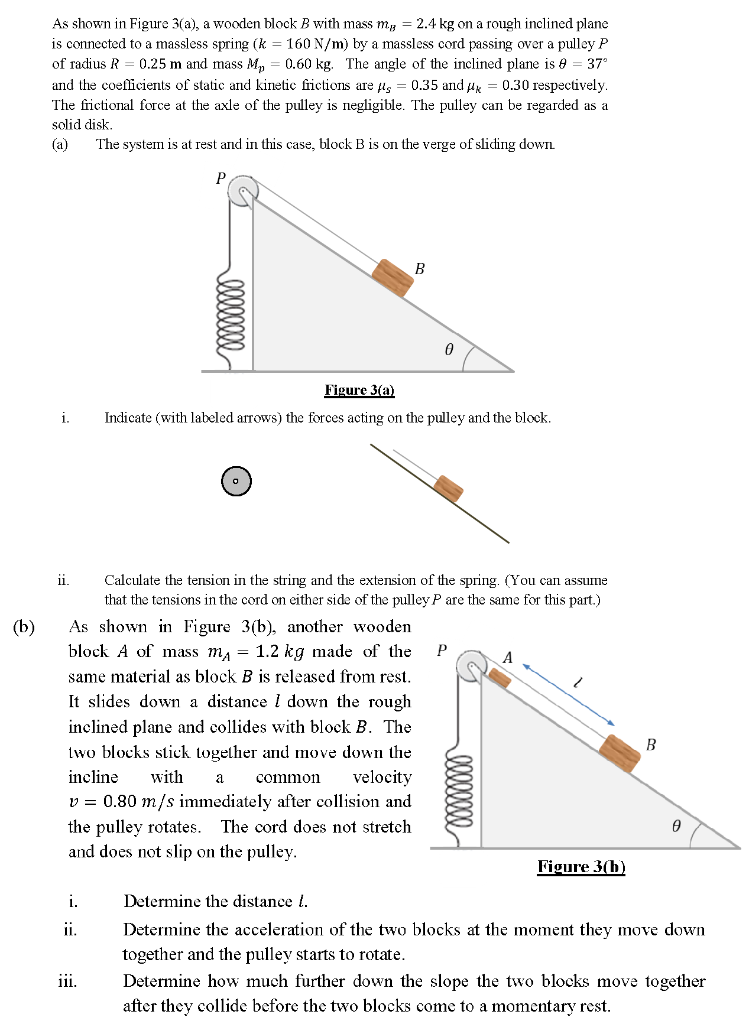As shown in Figure 3(a), a wooden block B with mass mB = 2.4 kg on a rough inclined plane is connected to a massless spring ( k = 160 N/m ) by a massless cord passing over a pulley P of radius R = 0.25 m and mass Mp = 0.60 kg. The angle of the inclined plane is θ = 37∘ and the coefficients of static and kinetic frictions are μs = 0.35 and μk = 0.30 respectively. The frictional force at the axle of the pulley is negligible. The pulley can be regarded as a solid disk. (a) The system is at rest and in this case, block B is on the verge of sliding down. Figure 3(a) i. Indicate (with labeled arrows) the forces acting on the pulley and the block. ii. Calculate the tension in the string and the extension of the spring. (You can assume that the tensions in the cord on either side of the pulley P are the same for this part.) (b) As shown in Figure 3(b), another wooden block A of mass mA = 1.2 kg made of the same material as block B is released from rest. It slides down a distance l down the rough inclined plane and collides with block B. The two blocks stick together and move down the incline with a common velocity v = 0.80 m/s immediately after collision and the pulley rotates. The cord does not stretch and does not slip on the pulley. Figure 3(b) i. Determine the distance l. ii. Determine the acceleration of the two blocks at the moment they move down together and the pulley starts to rotate. iii. Determine how much further down the slope the two blocks move together after they collide before the two blocks come to a momentary rest.
